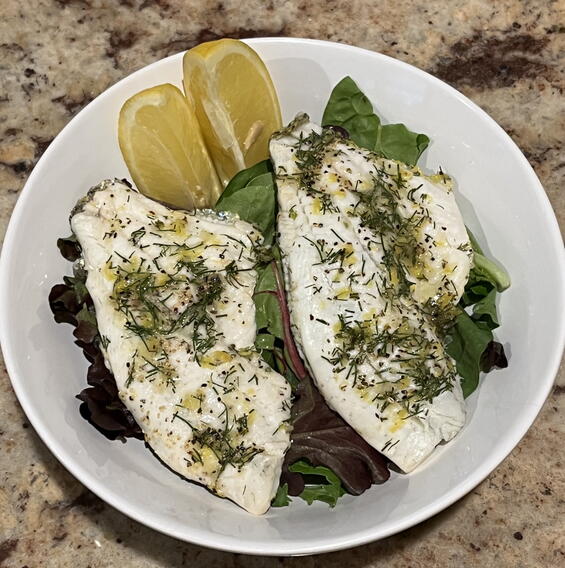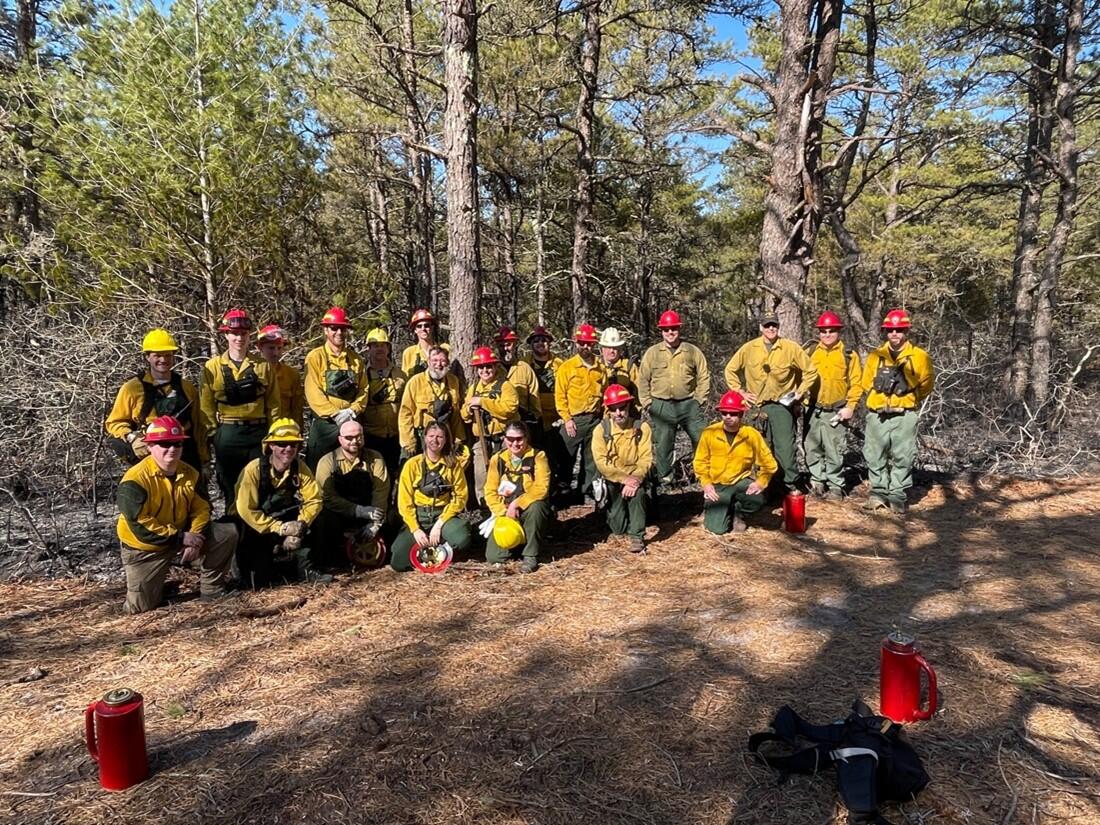Panfish: How to catch, prepare, and cook

Panfish include fish like black crappie, white perch, yellow perch, bluegill, and pumpkinseed. Get tips and recipes to help you enjoy the freshwater fish you catch.
Fish, wildlife, and drought
MassWildlife has received questions about how fish and wildlife may be responding to current drought conditions. It’s important to remember that fish and wildlife in New England have adapted to fluctuations in weather conditions, including harsh winters and droughts. That said, extended drought conditions can have the most direct and severe impacts on fish communities and fish habitats. Below are a few examples of impacts drought can have on some fish and wildlife.
Stream fishes suffer from reduced quantity and quality of habitat as reduced surface and groundwater flow squeeze them into ever-decreasing and isolated pools of water. Decreases in the amount of cold groundwater can change the quality of those remaining pools of water, which can have dramatic impacts on trout and other fishes. Stagnant water heats up fast in the summer resulting in a loss of dissolved oxygen required to keep fish alive. As fish become trapped in smaller pools, they also become easy targets for a host of predators ranging from herons and raccoons to larger fish in the same pool. There is also increased likelihood for disease outbreaks and lower reproductive success for fishes during drought. Some very small streams can dry out entirely. In these extreme cases, it can take months or years for fish to recolonize the impacted reaches. As a drought increases in severity and duration, the impacts that are felt in headwater streams get transferred to larger systems and impact fish communities on an ever-widening scale.
MassWildlife monitors fish communities to gain a better understanding of the effects of drought in a human-dominated landscape. Currently, MassWildlife is collaborating with USGS to study changing streamflow patterns and warming temperatures in streams across the state. The goal of this project is to identify areas, called climate change refugia, that are least likely to change in the coming decades.
Lake and pond fishes are generally less impacted by drought than those living in streams, but prolonged drought can have impacts. Very shallow ponds that are heavily vegetated encounter large swings in dissolved oxygen levels. Water’s ability to hold oxygen decreases as water temperatures rise. This is compounded when, at night, aquatic plants start to consume oxygen. As drought lowers water levels in already shallow ponds, these oxygen level fluctuations get more severe and can result in fish kills.
Whether in lakes, ponds, streams, or rivers, anyone who witnesses a fish kill caused by any reason should report it to the Massachusetts Environmental Police’s 24-hour radio room at 1-800 632-8075.
Trout stocking this fall may be impacted by the drought, although it is too early to know. Drought in the Northeast is difficult to predict since, unlike Western states, we don’t have a snowpack in the high mountains to monitor. Long-range rainfall forecasts are difficult to make, so variables like streamflow and groundwater levels are some of our best ways to monitor drought. Trout stocking typically begins in mid-September, depending on temperature. Curtailment of some trout stocking in rivers and streams this fall may occur due to low flows, but few impacts on lake and pond stocking are expected. MassWildlife fisheries biologists will assess the condition (temperature, flow, etc.) of each waterbody before making a final decision about stocking.
Bears rely on summer berries, which can be diminished with extended drought. As a result, bears search for other types of food causing them to visit residential areas more often than in a normal year. In dry summers, nuisance bear complaints tend to be higher because bears are more frequently using residential areas, taking advantage of bird feeders and trash. Dry summer conditions can also affect the timing and quality of fall acorn crops, an important fall food source for bears. This can cause bears to seek food in agricultural areas and can lead to crop damage.
Deer likely experience few direct impacts from the drought, as deer browse on a variety of food sources. Extreme dry conditions can cause deer to congregate in areas where food and water is more readily available.
Moose also browse on a variety of food sources, but are more likely to experience stress during hot, dry conditions. Moose seek shelter from hot temperatures in forested wetlands and use mud and shallow water to cool down. When these wetland areas begin to dry up during drought, moose can struggle to find relief from the heat.
Waterfowl like ducks, geese, and swans can fly to waterbodies with adequate water levels when needed.
Turkeys likely suffer few negative impacts. In general, turkey populations are more sensitive to spring weather conditions and nest predators.
Beaver have the ability to regulate water levels, so if water becomes too shallow they may increase dam building activity. If they cannot raise the water level through additional damming, beavers may leave the wetland in search of deeper water.
Learn more about drought conditions and actions you can take to conserve water.
2022 Youth Pheasant Hunt Program
Hunter Education graduates aged 12–17 can participate in the Youth Pheasant Hunt. This exciting program involves shooting instruction and practice, a pre-hunt workshop, and a mentored hunt prior to the regular pheasant season. All young adults between the ages 15 and 17 need a hunting license, a pheasant/quail permit, and FID card to participate in this program.
The Young Adult Pheasant Hunt takes place on Saturdays in August, September, and October; specific dates vary and are determined by participating sportsman’s clubs. For more information and to view participating clubs, please visit the Youth Pheasant Hunt Program page.
MassWildlife fire crew builds capacity, habitat resiliency
It's been a great year for wildlife and plants that rely on fire-adapted habitats. Why is that? Because MassWildlife, with help from many partners, has already conducted 21 prescribed fires on more than 900 acres of public land this spring. Prescribed fires are carefully planned and carried out to restore dwindling habitats that support declining wildlife. Over several decades, MassWildlife has built its prescribed fire program to a level that is having a major benefit to fire-influenced landscapes.
Fire is not new on the landscape; for thousands of years indigenous peoples burned the same lands MassWildlife now targets for prescribed fire. Fire suppression became common beginning in the 1920s. By the 1980s, fire exclusion had begun to fundamentally alter many natural landscapes in Massachusetts. Open habitats like grasslands and woodlands were disappearing along with the wildlife that relied on them. Once ecologists, land managers, and wildlife biologists started to understand the damage fire exclusion was having on some ecosystems, they began to reintroduce fire through prescribed burning.

Prescribed fire preparation at Hiram Fox WMA, 1989.
From the start, application of prescribed fire in Massachusetts has been made possible by strong partnerships. In the mid-1980s, ecologists and biologists from UMass Amherst, Mass Audubon, The Nature Conservancy, The Trustees, Department of Conservation and Recreation (DCR), and MassWildlife started using prescribed fire to manage and improve priority grasslands and barrens habitat around the Quabbin Reservoir and Southeast Massachusetts including Plymouth, Cape Cod, and the Islands. The first prescribed burn on a MassWildlife Wildlife Management Area (WMA) took place in 1989 at Hiram Fox WMA in Chester.
Since that first prescribed burn, MassWildlife has steadily worked to increase staff skills, strengthen partnerships, and solidify policies—all with the goal of improving and restoring fire-influenced habitats important for wildlife. The program grew throughout the 1990s and early 2000s and focused on reintroducing fire into pine barrens and grasslands in Edgartown, Falmouth, Mashpee, and Montague. As the agency took on more restoration projects across the state, the prescribed fire program grew and over the last decade, the program has taken big steps forward.
Recent program highlights:
- 2013: Conducted 7 prescribed burns, 110 acres burned.
- 2014: Conducted 10 prescribed burns, 141 acres burned.
- 2015: New record set, with 16 burns in one year, and 6 assists to partners.
- 2016: For the first time, staff deployed to fight wildfires around the country where they gained experience and new skills. Staff worked on crews alongside Massachusetts DCR.
- 2017: Hired the first Prescribed Fire Program Manager, and the Massachusetts Fisheries and Wildlife Board adopted the MassWildlife Prescribed Fire Policy and Standards. Learn more…
- 2018: More than doubled previous annual record, with 421 acres burned.
- 2021: Hired National Wildfire Coordinating Group (NWCG) certified Burn Boss and conducted 26 burns on 822 acres. Staff fought wildfires in four different states as part of DCR and NPS crews. Read more…
- 2022: 35 staff from across the agency are now trained to work on prescribed fires. More than half have specialized training. So far in 2022, MassWildlife staff and partners, have completed 21 prescribed fires on more than 900 acres.
The steady, purposeful expansion of the prescribed fire program has a direct impact the wildlife of Massachusetts. This increase in prescribed fire activity improves habitat for more common wildlife such as American woodcock and ruffed grouse, but also for many rare and declining plants and animals, such as eastern whip-poor-will, grasshopper sparrow, federally and state rare plants, and numerous butterflies, moths, and native bees.
MassWildlife continues to plan restoration projects within fire-dependent ecosystems including oak woodlands, pine barrens, grasslands, and calcareous fens. Habitat management projects like these are vital as stressors including non-native insects, diseases, wildfires, climate change, and habitat fragmentation strain public lands and other open natural spaces. Prescribed fires help build resiliency in our ecosystems, and MassWildlife will continue to build resiliency in the agency fire team.
Learn more about MassWildlife's Prescribed Fire Program
- A Prescription for Fire
This article was published in Massachusetts Wildlife magazine in 2018 and outlines what's involved in planning a safe and effective prescribed fire. - Burning for Wildlife
This article was published in Massachusetts Wildlife magazine in 2021 and reveals how using prescribed fire in habitat restoration projects is helping animal populations in decline.

MassWildlife led a skilled burn crew comprised of staff from DCR, Towns of Mashpee and Barnstable, and MA Army National Guard at Mashpee Pine Barrens WMA in April 2022.
Report rare species
As warmer temperatures continue, and people spend more time outside, many Bay State residents are also observing more of their furry, feathered, fishy, and web-footed neighbors. Massachusetts boasts a wealth of abundant native species such as the American robin, Eastern chipmunk, pickerel frog, and common garter snake. It is also home to hundreds of much rarer populations, ranging from mammals to reptiles to amphibians and beyond.
If you see any of the 400+ species listed as endangered, threatened, or of special concern under the Massachusetts Endangered Species Act, or if you find a seasonal wetland area that may be a vernal pool, MassWildlife would like to hear about it. Please share your observations using our Heritage Hub. Your reports are critical to the continued success of population trend monitoring and conservation efforts.
MassWildlife’s Natural Heritage and Endangered Species Program is responsible for the conservation and protection of our most vulnerable plant and animal species. Rare species and their habitats play critical roles in keeping Commonwealth communities thriving.
Another way to support rare species conservation and management is to learn which populations live near you. Use the Rare Species Viewer to search by town name or by species name to view records of rare animals and plants that have already been observed and confirmed. Once you can recognize more of these rare species and their habitats, you can contribute more of your observations.
In addition to species reporting and identification, you can show your support with direct financial contributions. All donations to MassWildlife's Natural Heritage and Endangered Species Program help provide the materials and services needed to give these species a fighting chance.
How to Report
How to Research
How to Donate
- Online by credit card or electronic check
- Online through your MassFishHunt account
- By mail or in person, using a paper check made out to "Comm. of MA—NHESP" and addressed to: MassWildlife, 1 Rabbit Hill Road, Westborough, MA 01581
Habitat grant due August 31
Private and municipal landowners can now apply for MassWildlife's Habitat Management Grant Program! Funded projects will enhance wildlife habitat and promote outdoor recreation on conserved lands. Application deadline is August 31.